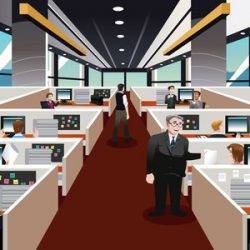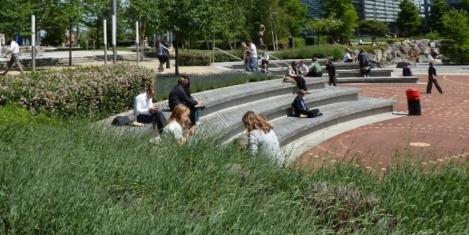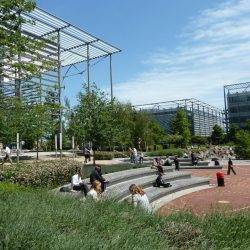October 11, 2017
Traditional department-based office layouts reduce efficiency and collaboration, say bosses

Nearly two thirds (64 percent) of senior executives say their offices are still structured on a traditional departmental basis, despite the fact that the majority of those polled in a recent survey (94 percent) believe project efficiency could increase significantly if they simply re-arranged their office seating plans to promote cross-departmental collaboration between team members. The new report Agile Ways of Working: The Great Leadership Disconnect from digital consultancy, Red Badger, claims that not only do these senior decision makers believe in the promotion of collaboration, but four out of five (81 percent) digital leaders in organisations who were additionally surveyed, strongly believed that an inflexible office layout actively led to delays in launching a product or service into the market or to customers. “Waterfall” ways of working (62 percent) and teams working on multiple projects at once (51 percent) were also among the most cited reason for delays in the past.













 Employees who feel trusted by their employer to manage how and when they work for themselves can improve their levels of productivity, a new survey suggests. The research by Peldon Rose claims that UK workers rate feelings of trust and autonomy from employers and colleagues as increasingly important in keeping them productive and happy in the workplace. But the survey also shows that many employers are failing to provide employees with the resources and support they need to manage their workload and keep them motivated. Although the majority of staff (59 percent) say they work most productively in the office, a third (33 percent) wish they were more trusted to manage how and when they work and 42 percent say that their office does not support a culture that allows them to work flexibly. Despite the clear value that staff place on trust and autonomy, employers are overlooking an opportunity to create a confident and self-motivated workforce.
Employees who feel trusted by their employer to manage how and when they work for themselves can improve their levels of productivity, a new survey suggests. The research by Peldon Rose claims that UK workers rate feelings of trust and autonomy from employers and colleagues as increasingly important in keeping them productive and happy in the workplace. But the survey also shows that many employers are failing to provide employees with the resources and support they need to manage their workload and keep them motivated. Although the majority of staff (59 percent) say they work most productively in the office, a third (33 percent) wish they were more trusted to manage how and when they work and 42 percent say that their office does not support a culture that allows them to work flexibly. Despite the clear value that staff place on trust and autonomy, employers are overlooking an opportunity to create a confident and self-motivated workforce.

















